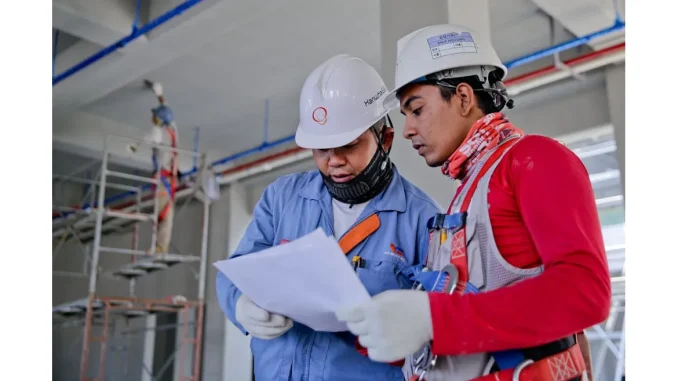
In the dynamic realm of construction and development, adherence to building regulations is not simply a legal formality but a cornerstone of ensuring safety, structural integrity, and compliance. Building regulations delineate the minimum standards for the design, construction, and modification of nearly every building, and these standards are obligatory, not mere suggestions. From initial planning stages through to project completion, meticulous compliance with these regulations is imperative.
Grasping the complexities of building control is essential for any professional in the construction industry or individuals planning a building project. In the United Kingdom, the Building Regulations 2010, formulated by the government with Parliament’s endorsement, govern the construction and extension of buildings. Compliance with these regulations is crucial for ensuring the safety of buildings, thereby protecting both occupants and the public. Building control approval, distinct from planning permission, is equally critical and often required in tandem with planning permission for various projects.
The commencement of any construction project begins with an assessment of whether building control approval is necessary for the proposed works. This approval is indispensable for guaranteeing that all safety standards are met. Once the need for approval is established, the subsequent step involves submitting a quotation request or an application form. This application undergoes a rigorous validation process, including a thorough review of the required information and the submission of appropriate fees for the works. While this might appear daunting, it is a crucial step to ensure that the construction project adheres to all necessary regulations and standards.
For full plans applications, a detailed plan check is conducted to ensure compliance with the regulations, identify any non-compliances, and specify additional information requirements. Remarkably, construction works can commence within 48 hours of application validation, provided that necessary inspections are scheduled as required. Site inspections are a pivotal component of the building control process, occurring at key stages of the works to ensure compliance with building regulations. Registered building inspectors meticulously examine the works on-site, identifying areas that require attention. The commencement of works is often determined by key milestones such as the Damp Proof Course (DPC) height for extensions or new build properties.
Upon the completion of works, notification must be made within five working days using a notice of completion form. A completion inspection is then arranged, after which a completion certificate is issued if all requirements are satisfactorily met. This certificate is crucial for securing mortgages or facilitating property sales, as it signifies that all building regulations have been adhered to and that the structure is safe for occupation. Local Authority Building Control (LABC) serves as a valuable resource, providing guidance through the approval process. LABC Front Door offers additional support in navigating building control requirements. For a wealth of information on building regulations and compliance, the Planning Portal is an excellent resource, while the Health and Safety Executive website provides valuable insights into safety regulations. Furthermore, the Gov.uk Building Safety Regulator (BSR) oversees building safety to ensure construction works meet safety and quality standards.
Consider the case of a newly planned residential development. The project’s initial phase involves a comprehensive review to determine if building control approval is required. Upon confirming the necessity, the developers submit a detailed application, inclusive of plans and associated fees. The application undergoes a rigorous validation process, and a plan check is conducted to ensure compliance with the detailed regulations. As the project progresses, site inspections become a regular occurrence. Inspectors visit at critical stages such as the laying of foundations, installation of structural elements, and the setting of the Damp Proof Course (DPC). These inspections are not cursory checks but thorough evaluations to ensure every aspect of construction adheres to the stringent building regulations.
Upon nearing completion, the developers notify the authorities using the notice of completion form. A final inspection is arranged, and if all regulatory requirements are met satisfactorily, a completion certificate is issued. This certificate is not just a document but a testament to the building’s compliance with all safety and structural standards, proving invaluable for securing financing and ensuring buyer confidence. Throughout this process, resources like the Local Authority Building Control (LABC) and the Planning Portal provide indispensable guidance. These platforms offer clarity and support, helping developers navigate the often complex landscape of building control requirements. The Health and Safety Executive also plays a crucial role, offering insights into maintaining safety standards throughout the construction process.
The intricate process of building control is much more than a regulatory requirement—it represents a commitment to safety, quality, and excellence in construction. Every stakeholder, from developers to builders, benefits from adhering to these regulations, resulting in structures that stand the test of time and provide safe, reliable spaces for their occupants. By understanding and adhering to this process, developers and builders can create structures that not only meet legal standards but also provide secure and enduring environments for all. The meticulous attention to detail and adherence to regulations throughout the construction process ultimately lead to the successful realisation of safe, compliant, and high-quality building projects.


Be the first to comment